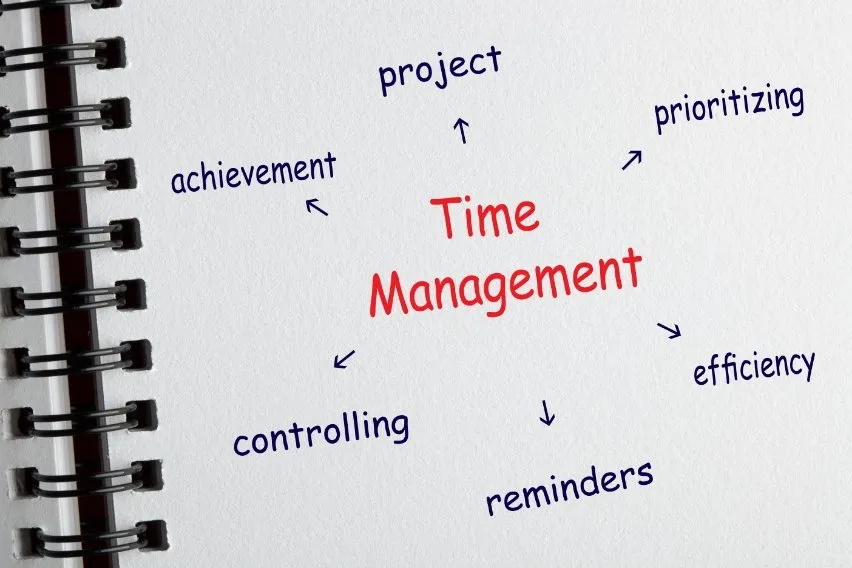Top 15 Time Management Techniques That Work

The effects of poor time management aren’t always immediately evident. But not managing time well eventually leads to poor work quality, missed deadlines, and even conflicts.
Some people are naturally better at time management. Perhaps they learned at a young age how to complete urgent and important tasks first and focus on less critical items later.
Does your to-do list seem never-ending? That’s likely because you’re struggling to manage time. We want to help you set priorities better and engage in deep work more efficiently.
Not all time management techniques will be perfect for you. But some might ensure you stay focused during your most productive hours.
Table of Contents
OKR – Objectives and Key Results
How Does Time Management Help?
Pareto Analysis
You might have heard about Pareto analysis in an economics class or from that friend who’s into finance. Vilfredo Federico Pareto, an Italian sociologist and economist, created this analysis. Essentially, the Pareto analysis states that 80% of effects stem from 20% of causes.
For example, someone may earn 80% profit from 20% of the product they sell. With time management, that means you complete 80% of your important tasks with 20% of your total effort.
Understanding Pareto analysis can help you with the big picture. Recognising that uneven distribution of time and effort leads to success or failure can feel stimulating. Therefore, the primary focus should be on the important tasks that create value.
Maybe it’s forming customer relationships, writing an outline for your essay, or coming up with new ideas. Pareto analysis requires you to differentiate between urgent tasks and routine tasks. It also forces you to delegate, outsource, and automate whenever possible.
Pomodoro Technique
The Pomodoro technique has been around since the late 1980s. Francesco Cirillo created it. He was a student who struggled to focus when studying. His frustration led him to develop the popular Pomodoro time management technique.
You’ll need a timer and a to-do list to try this. It’s one of the most effective time management strategies. Set the timer for 25 minutes. Next, select one task, regardless of its importance. Focus as much as possible on the single task. Then take a five-minute break when the alarm goes off.
One session should have four “pomodoros”, after which you can have a 30-minute break. This time management technique helps you break down complex projects. It also reduces the pressure of starting your work.
Eisenhower Matrix
If you want to find the best solution for prioritising tasks and managing your to-do list, the Eisenhower Matrix can help. Of all the time management techniques, this one is the most visual. You need to divide all the tasks into the following categories.
- Do
- Schedule
- Delegate
- Delete
All your tasks are now in separate quadrants. The “Do” box means dealing with an urgent and important task. The “Schedule” box contains non-urgent but essential tasks.
The “Delegate” box holds the urgent but less-important list of tasks that perhaps someone else can do. Finally, the “Delete” category has distractions and non-urgent and unimportant tasks.
Time Blocking Method
You might run into the time blocking method when researching good time management techniques. This is one of the best solutions for people who feel their work schedule controls them (instead of the other way around).
The time block system allows you to juggle different projects and responsibilities. Basically, you’re dividing your day into specific “blocks” of time. Each block requires you to complete specific tasks or tasks that fall into the same category.
You discard the idea of an open-ended to-do list and finish your tasks in the predetermined time frame. Time blocks allow you to plan your weekly schedule easier. You’ll also allocate time for important events better.
Getting Things Done (GTD)
Another popular time management strategy is Getting Things Done (GTD). The creator is David Allen, a well-known productivity expert. This is one of the best time management systems for those who struggle with forgetting important details. It’s also great for people who have many different tasks in one day. GTD relies on five basic practices:
- Capture Everything – Whatever crosses your mind, make sure to capture it. No detail is too small.
- Clarify – Process the details and separate them into clear and actionable steps.
- Organise – Ensure everything is in the right place. Delegate projects.
- Review – Revise, update, and look over your to-do lists.
- Engage – Start the important tasks immediately.
Rapid Planning Method (RPM)
Legendary U.S. life coach Tony Robbins came up with RPM. This time management system allows you to work towards desired outcomes despite time constraints. The RPM method invites you to ask yourself three critical questions:
- What do I really want?
- Why does it matter to me?
- How will I achieve it?
You can also create your own RPM blocks of questions and develop plans accordingly. The RPM is more than a time management system. It forces you to determine what you truly want to achieve before taking specific actions.
Pickle Jar Theory
Those with poor management skills will try anything to fix their relationship with their schedule. They’ll even research a time management theory called the Pickle Jar.
This is the right time management technique for those who feel like they work all day but accomplish little.
The method helps you organise your daily schedule, phone calls, meetings, and other tasks in a specific order. A pickle jar represents your day, which is finite. You can classify your activities into four categories.
- Sand – This represents small manageable tasks, social networking, and mind-wandering.
- Pebbles – They represent tasks with greater urgency, but not essential tasks.
- Rocks – These are bigger tasks that need your full attention and have long-term goals as focus.
- Water – This represents your private life.
Eat That Frog Technique
Other time management techniques may attempt to sugarcoat what’s actually necessary to achieve focused success. But if your time management skills need serious work, sometimes the best advice is to “Eat that frog”.
Are you the type of person that doesn’t know how to prioritise tasks? Do you mainly dwell on minor items? That urgent and vital task you’re avoiding is your frog.
Mark Twain famously said that if you eat a live frog in the morning, your day will likely only get better. Maybe your frog is sitting down to schedule meetings or finally calling the plumber.
Either way, the “Eat that Frog” technique can help you in your daily life and ensure you clear as many tasks as possible.
Set Goals
If you’re someone with poor time management skills, you might have gotten some well-meaning advice from others. They may say, “Just set goals and work on a specific task”. While somewhat preachy, that advice rings true.
Some time management tips are useless—but having a clear idea of your goals is essential. Some time management methods have clever names, and experts have written books about them. The set-your-goals-and-complete-tasks system is basic, but can work.
For example, let’s say your goal is to call 5 customers by lunchtime. Upon completing that task, your next goal could be to make a delicious cup of coffee. When it comes to time management skills, sometimes the most straightforward approach is the best.
Avoid Multitasking
Multi-tasking can sharpen senses, force you to learn how to deal with chaos, and keep boredom at bay. But when it comes to daily life, multitasking is one of the worst time management tips you might learn about. If you want to complete tasks and do so in your biological prime time, it’s better to prioritise them.
Managing time is something many struggle with. Still, multi-tasking isn’t helpful. It can cause anxiety, inhibit creativity, and ultimately not save that much time.
Multi-tasking can also lead to more mistakes, whether you’re time-bound or not. Instead of multi-tasking, try to group similar tasks and tackle them at the same time.
1-3-5 Rule
The 1-3-5 rule is one of the most popular time management techniques. Here’s the basic idea behind this rule. On a workday, you need to accomplish the following.
- 1 major task
- 3 medium tasks
- 5 small tasks
This approach to productivity and time management helps you avoid procrastination. It’s essential to create an actionable plan before starting your workday or week.
Kanban
Poor time management creates unnecessary problems. If you’re a visual learner, the Kanban productivity method can help. It’s a simple yet effective solution. All you need is a Kanban board with three columns. Each column represents tasks, categorised as follows.
- To do
- Doing
- Done
Other time management strategies call for taking a radical approach to how you work. But Kanban focuses more on the evolution of your work and making sure you’re keeping track of changes.
BuJo — The Bullet Journal
If you ever had a journal of any kind, the bullet journal, or BuJo, might work as an efficient time management tool. It’s a type of productivity journal that works as a planner, diary, and task list all in one.
It allows you to set goals, record achievements, and organise ideas, all in a creative way. You can use BuJo to track monthly, weekly, and daily progress. The BuJo system offers different bullet symbols and indexes that help you organise tasks.
The system may appear overly complex if you’re new to bullet journaling. But don’t worry, you can find bullet journal templates online. You can even buy ones with gorgeous layouts and simple instructions.
OKR – Objectives and Key Results
Time management and goal setting go hand in hand. And the Objectives and Key Results (OKR) framework can help you in both regards. It’s one of the time management techniques based on effective communication.
By using the OKR method, you’re learning to assert what you want to accomplish and what milestones will lead you to your goal. The OKR is less of a solo, deep-work method and more of a collaborative tool many teams use. The creator of the OKR method is Andy Grove, a former CEO of Intel Corporation.
Follow the 80/20 Rule
We touched on the 80/20 rule when discussing Pareto analysis. But Pareto analysis is mostly associated with economics and sales. So, the “80/20 rule” name is more common in the productivity industry.
The goal of this rule is to identify which tasks are in the 80% and which are in 20%. Do you spend most of your time working on tasks other people assign you or spend too much time on tasks? If you answered yes, you are likely focusing on the 80% that doesn’t yield results.
You need to turn your attention to the tasks in the 20%, regardless of what they might be. To see the real benefits of this system, you must try it out.
How Does Time Management Help?
Properly managing your time can improve your performance. It can help you deliver work on time, reduce daily stress levels, boost your confidence, and make you more efficient.
Perhaps the best way to understand why time management is so important is to observe what happens when you don’t master it.
People who don’t know how to manage their time have a poorer quality of life. They often miss deadlines and drown under stress.
Benefits of Time Management
The most important time management benefits include the following:
- Promotes better work quality
- Allows a healthier balance between work and private life
- Provides better work opportunities
- Boosts your confidence and can lead to pay raises
- Helps you learn how to plan ahead
- Eliminates distractions
Key Takeaways
No one has 100% control of their time. But too many people struggle to achieve any control of it. Implementing changes in how you manage time is often difficult, but worth the effort.
Even small changes can have impressive long-term effects. You’ll become less stressed and learn to manage your work better. You’ll find more time in the day for leisure activities and self-care.
Trying each technique can lead to you discovering your strengths and weaknesses. A few of these techniques include Kanban, the 1-3-5 Rule, and RPM. There are many more, so read the list in detail to learn about them.
And while many of the discussed techniques can help you take charge of your time, not all will be right for everyone. Try several techniques out. Stick with whatever works best for you.
FAQs on Time Management
What is a good example of time management?
Examples include knowing when to say no to distractions and cultivating self-awareness. Opting out of multitasking is also recommended.
What is the purpose of time management?
The main purposes of time management are to boost productivity and improve the overall quality of life.
What is the concept of time management?
It is the ability to set goals, prioritise tasks, and deeply engage in them in allocated time frames.
What are the biggest wastes of time?
Working without a goal, misplaced priorities, and distractions are the biggest wastes of time for most people.
RELATED ARTICLES



 How to Increase Productivity in the Workplace (10 Easy Tips)
How to Increase Productivity in the Workplace (10 Easy Tips) Quote vs Invoice: What’s the Difference?
Quote vs Invoice: What’s the Difference? What is E-Invoicing? Process, Uses & Benefits
What is E-Invoicing? Process, Uses & Benefits 10 Best Invoicing Software for Small Businesses
10 Best Invoicing Software for Small Businesses How to Write a Business Proposal (10 Easy Steps)
How to Write a Business Proposal (10 Easy Steps) Time Management Matrix: Definition, Importance & Benefits
Time Management Matrix: Definition, Importance & Benefits